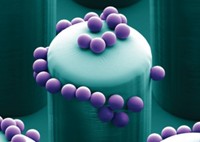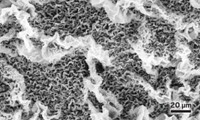Advertisement
Grab your lab coat. Let's get started
Welcome!
Welcome!
Create an account below to get 6 C&EN articles per month, receive newsletters and more - all free.
It seems this is your first time logging in online. Please enter the following information to continue.
As an ACS member you automatically get access to this site. All we need is few more details to create your reading experience.
Not you? Sign in with a different account.
Not you? Sign in with a different account.
ERROR 1
ERROR 1
ERROR 2
ERROR 2
ERROR 2
ERROR 2
ERROR 2
Password and Confirm password must match.
If you have an ACS member number, please enter it here so we can link this account to your membership. (optional)
ERROR 2
ACS values your privacy. By submitting your information, you are gaining access to C&EN and subscribing to our weekly newsletter. We use the information you provide to make your reading experience better, and we will never sell your data to third party members.
Materials
Fine Art Gets A Nano Sponge Bath
Tiny particles help tidy up delicate frescoes
by Bethany Halford
October 15, 2007
| A version of this story appeared in
Volume 85, Issue 42

TO REMOVE the ravages of time and grime from works of fine art, restoration experts have an entire palette of tools to choose from. Piero Baglioni would like to offer them another option: a sponge.
It's no ordinary sponge though. By enlisting magnetic nanoparticles, Baglioni, a chemistry professor at Italy's University of Florence, has created a material that can soak up cleaning solutions or microemulsions; squeeze them out onto the surface of a painting, fresco, or sculpture; and then reabsorb them without a human hand ever coming into contact with the delicate artwork (Langmuir 2007, 23, 8681).
Baglioni calls the material a nanomagnetic sponge. According to him, it is one of the most advanced, versatile systems for cleaning works of art. "This is better and faster than traditional methods," he says.
Technically speaking, the sponges aren't very spongy. Instead, they are more like a solid hydrogel. Baglioni and his colleagues Massimo Bonini, Sebastian Lenz, and Rodorico Giorgi prepare the material by chemically attaching CoFe2O4 nanoparticles to a polyethylene glycol and acrylamide polymer network. Like a kitchen sponge, the polymer network is full of pores that can soak up solutions and microemulsions.
The resulting nanomagnetic material is hard enough to be handled with tweezers or cut with a knife or scissors. Baglioni's group can also freeze-dry the material to get a magnetic powder that's easily rehydrated.
So far, Baglioni has found that the nanomagnetic sponge is particularly useful for removing Paraloid polymers from marble and frescos. Paraloid polymers were once used by art preservationists to protect artwork. Unfortunately, over time the polymer degrades, yellowing surfaces and breaking down a painting's inorganic pigments.
Restoration experts are now trying to remove Paraloid coatings before they can do any more harm. The task, Baglioni says, is particularly challenging with frescoes, which are painted on a porous calcium carbonate matrix.
"If you use an organic solvent to remove the Paraloid, you basically spread the polymer inside of the pores, and it becomes extremely difficult to remove," Baglioni explains. "It's almost impossible to remove all of the Paraloid using a pure organic solvent," he adds. To do so, a restorer would have to wash the surface hundreds of times.
The nanomagnetic sponge offers a far more practical way to remove the Paraloid, according to Baglioni. First the sponge is loaded with a microemulsion of the cleaning solvent in water. When the sponge is placed onto the fresco's surface, tiny emulsified solvent droplets migrate from the sponge into the painting's porous matrix. They dissolve the Paraloid and compartmentalize it into the microemulsion's organic phase. The sponge then reabsorbs the emulsion, taking the Paraloid with it and leaving only water behind.
STRICTLY SPEAKING, the magnetic nanoparticles aren't necessary for cleaning. Rather, they make it easier to manipulate the sponge on delicate surfaces, Baglioni says. "Apply a magnetic field, and you can remove the gel from the surface without touching it." The magnetic nanoparticles also make it easy to recover the sponge, he adds. A magnetic field can be used to squeeze all the fluid out of the material.
Baglioni and his team have already used the nanomagnetic sponges to remove Paraloid from a fresco from the International University of Art in Florence and on 14th-century paintings in an Italian villa north of Verona. Next, he plans to use the technique to restore a church in Sweden.
Richard G. Weiss, a chemistry professor at Georgetown University who has worked on art restoration projects, says the sponge offers a truly novel and creative approach to cleaning artwork. He notes that the ability to remove the material from a surface without touching it is particularly attractive. "By so doing," Weiss says, "the possibility of harming a delicate surface during this crucial step is reduced significantly."
What remains to be shown, Weiss notes, is whether some of the magnetic nanoparticles are left behind on the painting's surface. Weiss also wonders if the nanoparticles are able to remove paints that are composed of ferromagnetic materials. "Regardless," he says, "these materials represent a true advance in art conservation."





Join the conversation
Contact the reporter
Submit a Letter to the Editor for publication
Engage with us on Twitter